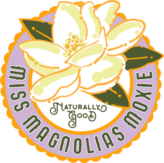Scientific Name: (Lythrum salicaria, Loosestrife/Lythraceae Family)
Common Name: Sage willow, Rainbow weed, Purple willow herb
Medicinal Part: The Herb
Description: Loosestrife grows from two to four feet high and branches toward the top. The many purple flowers making the spike, each have six long petals and are trimorphous (occurrence of three distinct forms of flowers). The leaves are broad-lanceolate and often with a heart shaped base. Found locally in swamps and marsh like meadows and borders.
Properties and Uses: Can be foraged as a food, leaves primarily. Purple loosestrife is an astringent herb that is mainly employed as a treatment for diarrhoea and dysentery. It can be safely taken by people of all ages and has been used to help arrest diarrhoea in breast-feeding babies. It can also be used to treat heavy periods and inter-menstrual bleeding. Modern research has shown the whole plant to be antibiotic and to be particularly effective against the micro-organism that causes typhus. The flowering plant is antibiotic, highly astringent, hypoglycaemic, styptic and vulnerary. It is valued as an intestinal disinfectant, especially in cases of enteritis, an infusion is used internally in the treatment of diarrhoea, internal bleeding, excessive menstruation etc. The flowering plant is harvested in the summer and can be used fresh or dried. Externally, the plant is used as a cleansing and healing wash for wounds, sores, impetigo, eczema, excess vaginal discharge, vaginal itching etc. The powdered plant is used as a haemostatic in cases of severe nosebleeds. The stems are regarded as gum stimulators and are given to children to chew in order to strengthen weak or bleeding gums. (naturalmedicinalherbs.net)
Dose: No data found (will need to review scientific studies)

